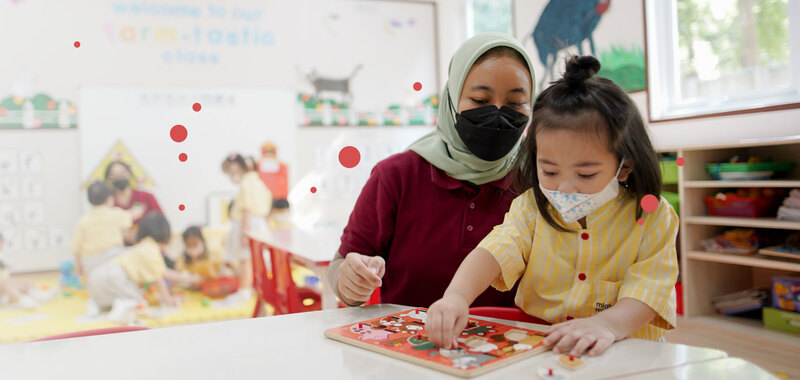For those unacquainted with the intricacies of air quality metrics, Nafas has provided an overview of the numerical and chromatic representations that will be encountered throughout the discourse.
Nafas assesses PM2.5 concentrations in the atmosphere, denoted in µg/m3, indicating that each cubic metre of air contains one microgram of pollutants. The World Health Organization’s annual recommended PM2.5 exposure limit for human health stands at 5 µg/m3. To provide context, Jakarta’s average PM2.5 concentration in July 2023 registered at 47 µg/m3.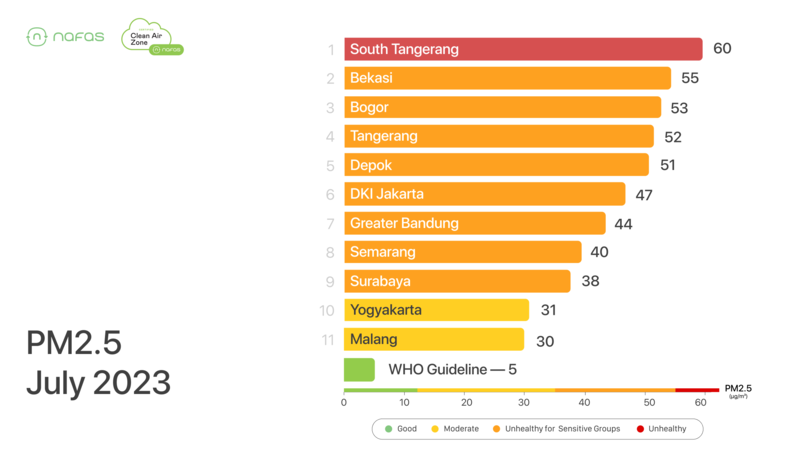
Regarding the interpretation of colours, Nafas relies on the US EPA’s air quality scale, renowned for its stringent criteria and global recognition. Below, you can compare the US EPA scale to the Indonesian ISPU scale and the Chinese scale.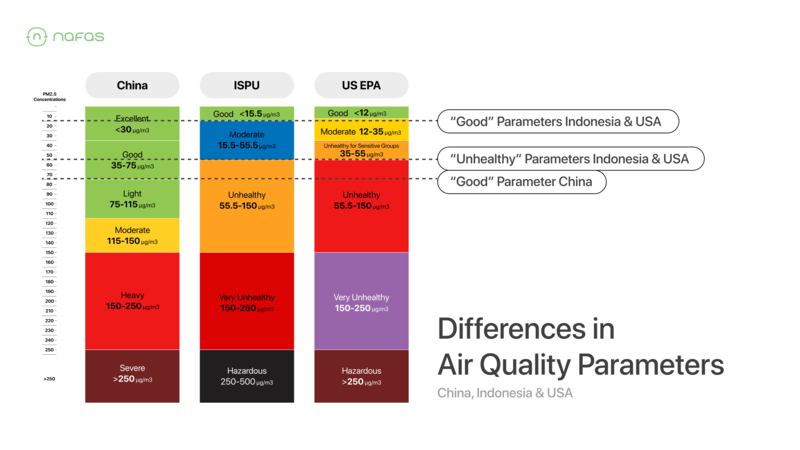
Once the basic understanding of its measurement system is established, the next step is to assess how air pollution impacts the human body. This way, a better understanding of its impacts towards performance in the office can be achieved.
PM2.5, which stands for particulate matter with a diameter of 2.5 microns or less, is commonly associated with activities involving combustion. This includes emissions from vehicles, power plants, and even open waste burning in our local communities. When these tiny PM2.5 particles are inhaled, they can deeply penetrate the lungs and potentially enter the bloodstream, triggering systemic inflammation.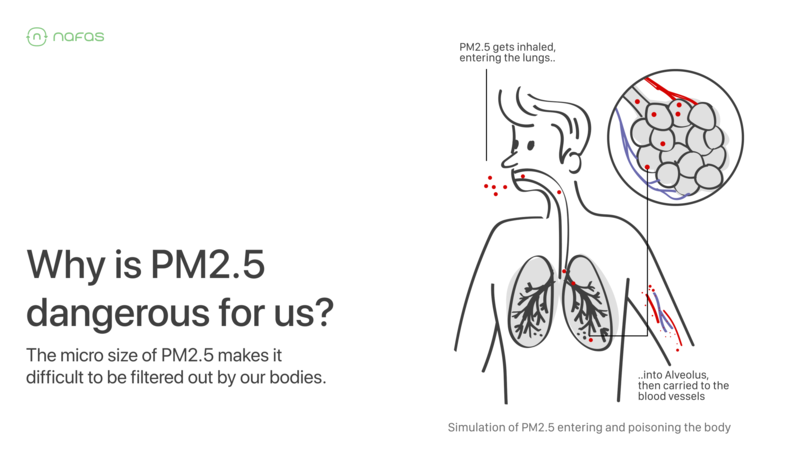
The body’s immune system initiates an inflammatory response upon recognizing foreign particles, releasing pro-inflammatory mediators to combat them. Continuous exposure to PM2.5 can result in chronic inflammation, which is associated with a range of health issues, including respiratory and cardiovascular diseases.
Numerous studies have established that PM2.5 has a notable impact on children’s health, particularly with regard to asthma-related incidents and the frequency of emergency visits or hospitalisations. Specifically, there is a 9% increase in the risk of asthma attacks among children due to PM2.5 exposure.
In a study featured in the Kosin Medical Journal, conducted by a team of researchers from South Korea and Japan, an investigation into the immediate impact of PM2.5 on children was undertaken. The findings revealed a 9% escalation in the risk of asthma attacks when the PM2.5 concentration exceeded the baseline of 15 μg/㎥ by 10 μg/㎥ on the day preceding asthma attacks (Lee et al., 2018).
Now let’s take a look at some indoor air quality data from Mighty Minds Preschool Hang Tuah during school hours.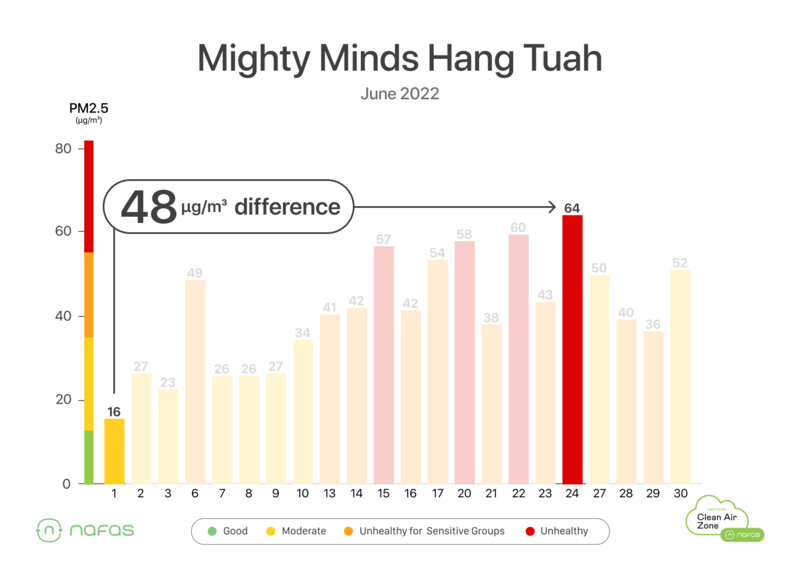
In June 2023, during school hours, the PM2.5 level hit its lowest point at 16 µg/m3. However, as the month progressed, daily averages soared to as high as 64 µg/m3, marking a substantial increase of 48 µg/m3.
For children exposed to such indoor pollution levels, the likelihood of experiencing asthma attacks stands at 9%. This data underscores the concerning threat that air pollution poses to our children’s health, even when the baseline PM2.5 level is as “low” as 15 µg/m3.
Now, let’s delve into air quality data from two educational institutions, Mighty Minds Preschool and an international school in North Jakarta, to visualise the findings of the Kosin Medical Journal research.
Firstly, at Mighty Minds Preschool’s Hang Tuah campus in July 2022, a significant issue emerged: indoor pollution levels. As depicted in the chart above, the PM2.5 concentration on school days reached a troubling 67 µg/m3, well exceeding the recommended PM2.5 threshold.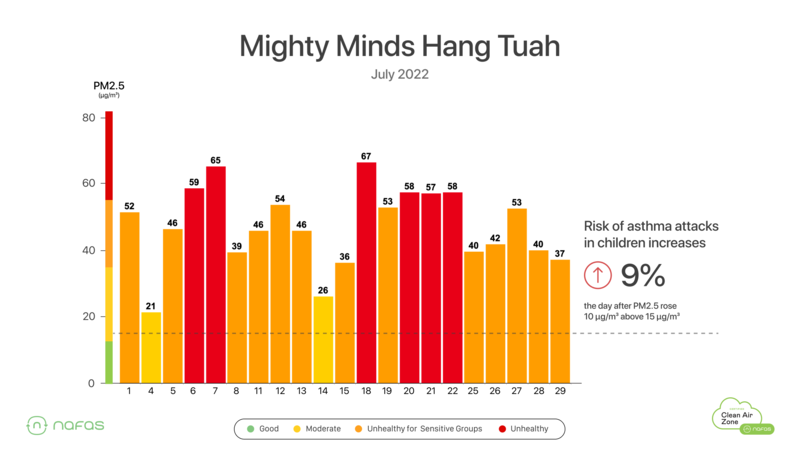
A similar situation unfolded within an international school located in North Jakarta, where the indoor air quality during school hours significantly surpassed the thresholds established in the aforementioned study.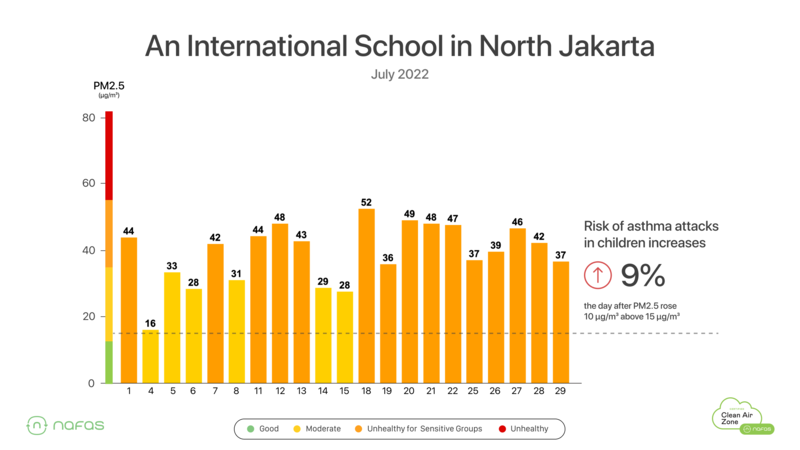
Other data concluded from Mighty Minds on a different month: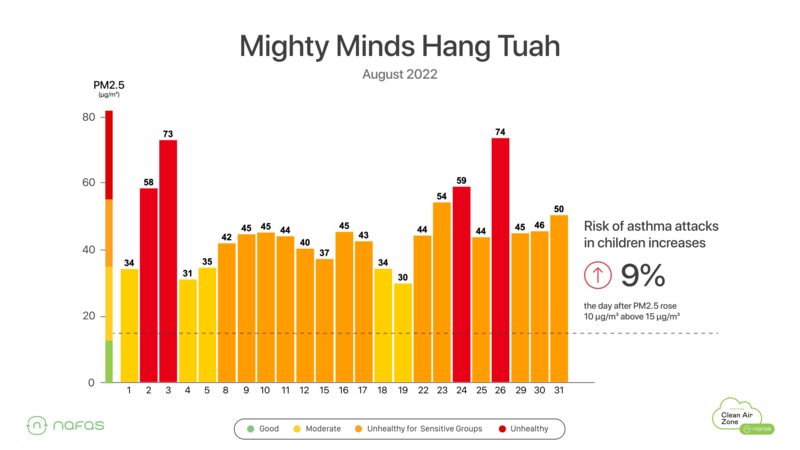
Even on different school days, it becomes evident that the indoor air quality within Mighty Minds’ premises could potentially elevate the risk of asthma attacks among children.
So, what should the air quality inside classrooms ideally resemble? The research featured in the Kosin Medical Journal has underscored an increased asthma attack risk in children when PM2.5 levels exceed 15 µg/m3. Interestingly, this level coincides with what is deemed “Good” on the US EPA and ISPU scales.
To attain such air quality standards, especially in cities with elevated pollution levels such as Jabodetabek, Bandung, or Surabaya, educational institutions must adopt enhanced filtration strategies.
This is precisely why Nafas has introduced a subscription service called Clean Air Zones, aimed at ensuring healthy air quality within your business or building without the need for constant monitoring. After years of development, Nafas has developed an ecosystem that enables companies to measure air pollution levels in their offices, rectify the issue, obtain certification, and include it in their ESG reporting on platforms such as GRI, MSCI, Sustainlytics, Moody’s, and many others.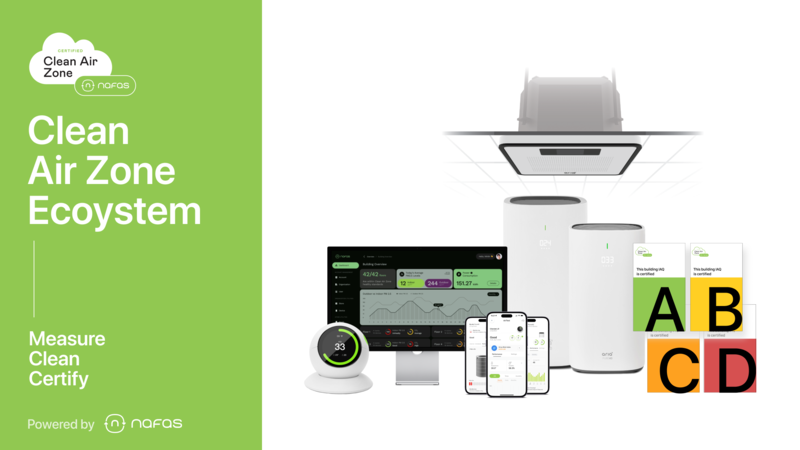
Becoming a Clean Air Zone involves three straightforward easy steps:
- Nafas conducts a comprehensive diagnostic assessment, assigning an AirScore to each location.
- Utilising AirScore as a foundation, Nafas devises a customised action plan and presents a subscription proposal tailored to the specific needs.
- Nafas proceeds to install an automated healthy air ecosystem, performs essential calibrations, and offers access to real-time data through a personalised dashboard.
In addition to its simplistic application, Nafas does all of that for its users. In terms of results, data from inside the Mighty Minds classrooms which have been turned into Clean Air Zones can provide insights.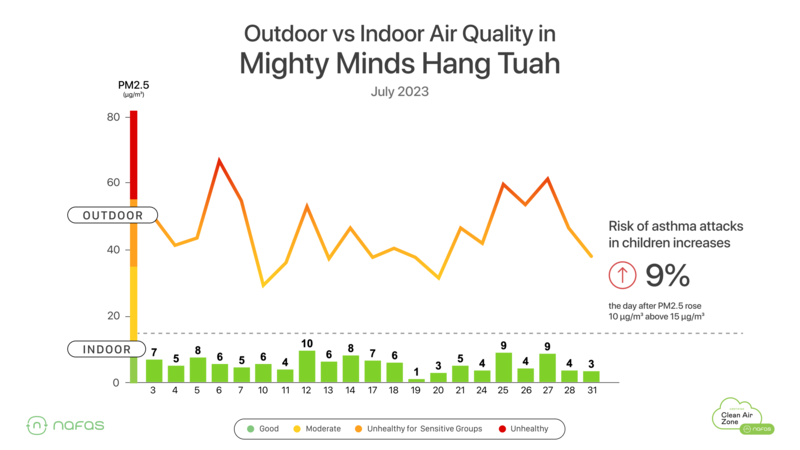
Turn Your School Into A Clean Air Zone
Nafas has collaborated with Mighty Minds Preschool in Menteng, Kemang, and Hang Tuah to assess indoor air pollution levels and transform their classrooms into Clean Air Sanctuaries. Mighty Minds Preschool proudly holds the distinction of being the inaugural educational institution in Indonesia to achieve Clean Air Zone status, thereby adopting a rigorous clean air policy within its school activities. This initiative entails the school’s commitment to postponing outdoor activities during periods of elevated outdoor pollution levels.
To learn more about Clean Air Zones, email [email protected] or click HERE to sign up for a free AirScore diagnostic!




